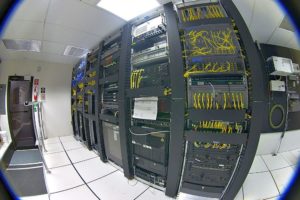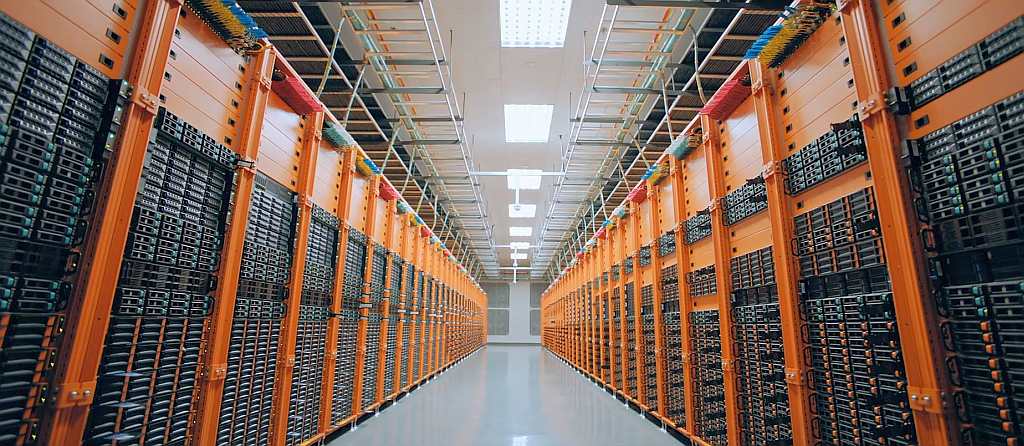The year 2020 saw an unprecedented turn of events and a global health crisis that impacted several industries and businesses. As employees, customers, and partners moved away from their offices, to work remotely, IT infrastructure got decentralized. Today, we see more consumer services delivered over the cloud, across industries. In response, businesses completed their digital transformation plans in a few months (not years as planned). Small and medium-sized enterprises embraced digital models and this spurred demand for colocation services and the cloud. The large businesses continue to think about scale – and demand hyperscale data centers. CIOs and CTOs are also asking about intelligent monitoring tools. While these are some data center trends we can expect in 2021, let’s look at a few more in this article.
- Hyperscaler Data Centers– Consumer demand and use of digital services are generating massive amounts of data. Data analytics and processing on the cloud is growing exponentially. Online shopping, online gaming, electronic payments, streaming media, IoT, and telecom services generate massive amounts of data. Services providers and big tech companies are struggling to scale up their cloud infrastructure to meet their customers’ data storage and compute requirements. That’s where Hyperscale data centers come in. These massive data centers with high rack density and mega power supplies are designed to handle enormous scale. They offer additional resources on-demand, catering to the needs of fast-growing businesses with burgeoning data. We already see demand for hyperscale data centers, and there are only 541 such data centers in existence today. Expect to see more hyperscalers in 2021.
- Customized Colocation Services – The rising cost of real-estate and steep overheads for cooling and power make it impractical for most businesses to run a private data center on-premise. Add to that the redundancy in components, which inflates capital expenditure. Shortage of skills and expertise also makes in-house data centers unviable. That’s why the demand for colocation services has increased in recent years. Colocation offers businesses full control of their infrastructure while providing space, power, cooling, and connectivity with redundancy, to ensure uninterrupted operations.
Colocation service providers are sweetening their offerings by offering customized services. And that’s going to be their core differentiator in 2021.
Customers will have the right tools to manage and oversee their infrastructure remotely, with real-time insights into the data center resources’ utilization and their own IT assets. Managed security and managed network operations are also available. Service providers now offer 24x7x365 remote hands support.
These customized services were mostly available for large businesses earlier. Still, with pay-as-you-consume models, small to medium-sized companies can avail of these services to compete directly with their bigger, more resourceful competitors.
- Intelligent Monitoring – As organizations move IT infrastructure out of captive data centers to external data centers, they demand the same level of control and visibility that they enjoyed on-premises. Public cloud and colocation service providers responded to that critical requirement by providing intelligent monitoring solutions so that IT leaders have direct control over all aspects of their IT systems at all times. Data centers now offer business intelligence software and monitoring tools on the network’s actual usage patterns, with robust asset tracking. These tools and services were once available to only the large customers. Today, even small and medium-sized colocation customers can access these tools and have complete control and visibility of their infrastructure, consumption patterns, and network traffic.

- Edge Computing – The introduction of 5G networks will see a proliferation of IoT and intelligent computing devices. These devices will generate data that needs to be processed in real-time or near real-time – and nearer to the device. A prominent example is autonomous vehicles, which Tesla has mastered, and big tech companies like Google and Apple are pursuing. The processing occurs in the car, with its on-board computers making timely decisions about braking the vehicle to avoid a collision. This data cannot be sent to the cloud for processing due to latency issues.
Applications like autonomous vehicles and smart devices such as those used for manufacturing or in the home will rely on edge computing – which is processing that occurs at the edge of the network. This trend will see the emergence of micro data centers at the edge of the network, which will perform immediate processing. The processed data is later sent to the cloud for aggregation and further processing.
In 2021 and beyond, expect to hear about terms like “data center in your car” or “micro data center” or “data center in your home.”
- Hybrid IT deployments – Most organizations have not yet deployed 100% of their infrastructure on the public cloud. Among the many reasons for this are regulation & compliance, security & privacy concerns, and legacy infrastructure. While non-core applications like email have moved to the public cloud, critical applications like core banking, ERP, and CRM run off private clouds or on-premise. Legacy applications were not designed for the cloud. That’s why most organizations have hybrid, multi-cloud architectures.
The data center industry responds by developing hybrid cloud architecture and multi-cloud solutions that allow companies to take advantage of public cloud computing’s power while still enjoying the security and control of a private network. Data centers offer data encryption services for public cloud, security, and compliance. Customers can now set up Virtual Private Clouds for greater security and control on the cloud. They can burst out to the public cloud to scale up on demand during peaks in their business. This architecture allows companies to protect and control their data while still using it in a public cloud environment – where it is heavily encrypted.
- Software-Defined Infrastructure & Virtualization – Virtualization of compute, storage, and networking resources has led to tremendous cost savings due to economies of scale. A single physical server, when virtualized, offers several virtual servers as a shared resource. A large storage pool offers almost infinite storage, allowing customers to scale up their storage as their data grows. In 2020, we observed more desktop virtualization (VDI) as more employees began to work from remote locations.
In 2021, expect to see more virtualization of infrastructure with the emergence of the Software-Defined Data Center (SDDC). This will enable data centers to offer resources to customers bundled as services on a pay-per-use model. And these services will be provided at very nominal costs that are within reach of even small businesses. It also means greater control on IT spending and alignment with IT budgets.
- Rack density – One of the parameters that data center providers speak about when discussing capacity is Rack Density. It’s about how many servers you can fit within a full-height rack enclosure or in the whole data center. More servers mean you can offer more capacity to a customer or accommodate more customers within the same area of your data center. Compute intensive applications like artificial intelligence, and machine learning also demand more compute resources. Hardware manufacturers are further miniaturizing server components to reduce the size of servers. That will enable more servers to fit in the same rack enclosure.
Generally, density is a power consumption measurement – the average amount of power required per rack. For instance, the average is 5 kW per rack though that is increasing. Earlier, a data center’s capacity was gauged in terms of watts per square foot. However, today it is about power consumed per rack. Rack density will continue to increase in data centers. Expect an average density of 11 kW per rack or higher during 2021.
- Automation and intelligence – The scarcity of talent and experience in the data center industry is a crucial challenge. The only way to address that is through automation and intelligence. AI-powered tools will drive autonomous systems within the data center, which take timely actions to prevent outages and ensure high availability. Intelligent monitoring systems that work 24x7x365 will raise alerts once thresholds are crossed. This also applies to security and network performance.
- Sustainability /eco-responsibility – Environmental sustainability has become a focus for businesses across industries. A responsible company thinks about reducing its carbon footprint, conserving power and water, and waste disposal.
Data centers are heavy consumers of power and water. Water goes into chillers that provide the cooling for heated servers. Air conditioning units consume much power. Worldwide, it’s estimated that data centers consume about 3 percent of the global electricity supply and account for about 2 percent of total greenhouse gas (GHG) emissions. IDC says the amount of energy used by data centers continues to double every four years, meaning they have the fastest-growing carbon footprint of any area within the IT sector. Models predict that data center energy usage could surpass more than 10% of the global electricity supply by 2030. A single data center can consume power equivalent to that required by an entire city.
Data center providers are trying to reduce their power and water consumption in two ways. One is the intelligent design of the data center building. Smart buildings incorporate power-saving systems. For instance, lights switch on when you enter the room and then switch off when no one is in the room. Two, data centers are building alternate sources of energy like solar, wind, and gas-powered turbines. These energy sources will complement the energy usage from the grid and help cut down on power consumption. Fuel for diesel generators is expensive, and data centers could use alternate energy sources as backup power in the future.
10. Services: Data center providers are going to offer specialized services, such as Compliance-as-a-service, DR-as-a-service and so on. Rather than approaching different providers for various services, enterprises would prefer to have is all from one service provider.
Sustainable or green data centers will offer benefits like efficiency and cost savings, which can be passed on to data center customers.
Data centers are going hyperscaler
An increasingly digitalized business ecosystem will see an explosion of data. With more customers and businesses consuming services from the cloud, and increased data, the demand for hyperscale data centers is expected to soar. Data centers will become the hub and powerhouses of digital ecosystems and will enable innovative services and applications. That would call for massive processing power, automation, and intelligence in the data center. The core differentiators for data centers will be scale, AI-powered applications, smart monitoring tools, and efficiencies that drive cost- and power savings.









